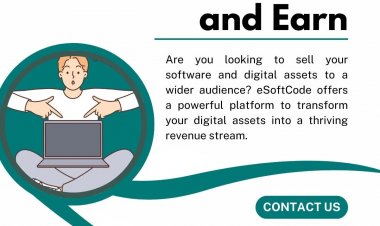Understanding the Salary Slip
A salary slip, also called a pay slip, is an official document issued for every payment period, say monthly. This document is usually issued by an employer and given to their employees. The contents of a salary slip include a complete breakdown of the salary and deductions, say TDS, for a given period. This document […] The post Understanding the Salary Slip appeared first on Chegg India.

A salary slip, also called a pay slip, is an official document issued for every payment period, say monthly. This document is usually issued by an employer and given to their employees. The contents of a salary slip include a complete breakdown of the salary and deductions, say TDS, for a given period. This document can be delivered to the employees in hard copies or via e-mail. Also, companies must issue salary slips and keep them as records for salary payments made and other financial requirements. An employee salary slip is an important document for employees as a lot depends on it, like, filing tax returns and proof of income, and it also helps in taking loans from the banks.
What are the components of a salary slip?
The salary slip is a simple document that comprises various information on the details of salary payments and deductions made to the employee by the employer. The following are components of a salary slip:
Income:
- Basic Salary
- Dearness Allowance
- House Rent Allowance
- Conveyance Allowance
- Medical Allowance
- Special Allowance
Deductions:
- Professional Tax
- Tax Deducted at Source
- Employee Provident Fund
The article discusses all the components of the payment slip in detail.
Income
1. Basic Salary
The basic salary is that part of the income from employment which is calculated before any additional benefits or deductions. This amount signifies the amount that will be paid to the employee as a part of the employment. The basic salary generally constitutes 35-50 percent of the total income paid to the employees. This is a fixed amount that usually does not change frequently. This is paid to the employees for the man hours they put in the job they have been employed for. The first line in the payslip format under the employment section is the basic salary.
This part of the income is subject to tax deductions and does not receive any relief regarding the same. At entry and junior level employment, the proportion of basic salary is higher than the other allowances offered by the employer. However, as a person climbs up the corporate ladder, the proportion of other allowances starts increasing at a faster rate than the basic salary.
2. Dearness Allowance
Since the basic salary component of income stays fixed for a while, companies need to compensate the employees for the effect of inflation so that the purchasing power of the beneficiary remains at par. Thus, dearness allowance is paid to offset the impact of inflation on an employee’s income. Generally, this constitutes almost 40 percent of the basic pay. Dearness allowance is directly based on the cost of living and might depend on a lot of factors, like, country of employment, inflation rates, interest rate, and so on. For income tax purposes, dearness allowance is considered as pay and is 100 percent tax deductible. This is listed under the income side of the salary slip. Dearness allowance was traditionally more prevalent in public sector companies, but it is also slowly trickling into the private sector.
3. House Rent Allowance
As the name suggests, a house rent allowance is given to employees who live in rented flats. In India, the rent range in different cities is very high. Thus, this allowance can vary from place to place. In cities where the general rent rate is high, the housing rent allowance is close to 50% of the basic salary. In other cities, it is usually around 40% of the basic salary.
This is not directly attributable to the income of the employee. This is paid to a person as a form of allowance. Thus, it is not tax deductible. However, a limit is set to the amount of allowance that will be tax-free. The tax exemption depends on the amount that is lowest among the following three components-
- Annual rent paid minus the total income of the employee, which is basic plus dearness income.
- Total house rent allowance received annually.
- For metro cities like Delhi and Kolkata, 50% of total income, i.e., Basic Pay + Dearness Allowance.
4. Conveyance Allowance
Conveyance Allowance, also known as travel allowance, is paid by the employer to compensate for the traveling expenses that relate to employment only. It is an important section of the income in a salary slip. It covers-
- Travel from home to office and office to home
- Travel to clients’ office
- It does not cover traveling expenses for personal purposes
The conveyance allowance paid by the employer is not 100 percent tax deductible. There is some relief that is available on this pay. Thus, a person needs to learn about the income tax exemptions available for various types of pay. The amount exempt from tax is the lower of the two-
- INR 1,600/- Monthly
- Total receipt of conveyance allowance monthly
5. Medical Allowance
Medical Allowance is an amount paid to employees by their employers and is listed on the income side of the salary slip. This amount is specific to meeting the employees’ medical needs during their employment tenure. The medical allowance is paid every month, irrespective of whether the employees utilize it for medical purposes only or not. However, if the employees use the medical allowance for medical purposes, the amount spent will be exempt from tax. For this reason, employees need to show all the medical documents for proof, like, prescriptions, bills, and medical test results. Further, it is important to note that tax exemption is applicable for the lower of the two amounts:
- INR 15,000 per annum
- Actual medical expense
6. Special Allowance
Special Allowance is the amount that is most commonly performance-based. The amount is paid to the employees to motivate and encourage them for the efforts they put in and the results they achieve. Since this is purely an income and is not used to compensate for any expenditure incurred in due course of the employment, special allowance is completely tax deductible. The special allowance given to the employees differs from company to company. The amount is usually on the higher side for profiles like sales and marketing. This is because their job is based on achieving a given threshold. Also, their salary constitutes variable pay, i.e., pay based on the results they achieve. This is also included in the special allowance and is shown on the income side of the salary slip.
Deductions
1. Professional Tax
Professional tax is a direct tax imposed on every employee on the gross salary. It is important to note that this does not mean that the tax applies only to professions like doctors or lawyers. This applies to every individual who is employed. Professional tax varies from state to state, and there are different slabs that every state sets for itself. Thus, this tax is collected by the state government. Also, there is an upper limit to the amount of professional tax that can be charged. The upper limit is INR 2,500/-.
The employers are responsible for deducting and paying this tax to the respective State Government per the rate slab. They are also responsible for the registration and collection of professional tax certificates. Individuals involved in freelancing need to register and pay this tax as per the slab provided by the state government.
2. Tax Deducted at Source (TDS)
This tax was originally made to collect tax before the income is given to an individual. In this context, tax deducted at source, TDS, is the amount of income tax that is charged to an employee but is deducted before the salary is paid. This means that the employer pays the income tax for the employee to the central government, but it is out of the pocket of the employee. This has more implications. Sometimes, when an employee can submit relevant documents, it is possible to generate a refund of a portion of the TDS that was initially paid. Please refer to the official website of the Income Tax Department of India to know more. Click here. This type of taxation policy is known as advance taxation. Even TDS is deducted according to slabs, but these are set by the central government and are applicable all over the country.
3. Employee Provident Fund (EPF)
An employee provident fund is similar to an investment deduction made from the employee’s salary, whose benefits are reaped after the individual’s retirement. Simply put, a particular salary is deducted from the employee’s salary, and the employer contributes an equal amount. Both of these amounts are put in the EPF account. The PF account for an individual remains the same irrespective of multiple job changes. The same procedure is followed every month until the employee retires, which is usually at the age of 55. The employee can withdraw the entire amount in the PF account and have a secured post-retirement life. Also, a minimum interest is earned on the PF account balance right from the start of employment.
Need for Salary Slip
1. Proof of employment and the tenure of employment
The salary slips are the most legitimate proof of employment and the time spent working for a particular employer. Salary slips are legally acceptable. They are very handy when it comes to applying for visas and educational institutions in foreign countries. They serve as proof of designation, last drawn salary, and the employer and are acceptable globally. Salary slips play an important role in background checks as well. The document holds legal against any salary claim. It has the current designation mentioned in it. Thus, the trajectory of an employee’s career at a particular company can be drawn by analyzing all the past slips.
2. Bank loans and credit card limit
A salary slip serves as the employment certificate for the banks, and it has all the details of the salary and designation. It is legal proof of the credibility of an employee. This makes it easier for the employees to avail of loans, credit cards, mortgages, and other borrowings which are based on salary slips. Therefore, this document is essential while applying for a credit card, loan, etc. Lending institutions and banks take a copy of the salary slip to file in their records. The salary statement of employees forms the basis of the creditworthiness of the borrower.
The salary slip helps increase credit card and loan credit limits. The pay slip salary also determines the taxes in the financial year. The interest paid can be used to reduce the employee’s tax liability.
3. Tax planning
Salary slips provide insightful information to the employees about their actual income, i.e., net salary. Most importantly, they enlist the number of deductions made by the employer. Accordingly, they can claim refunds or plan their expenses and future tax prospects. A salary slip lets the employee know exactly what their tax liability will be in the future and the in-hand salary they will receive.
Features of good tax planning
- It helps in managing the outflow of money in the form of tax.
- It helps in managing personal finance.
- A tax plan helps to avail the benefits of rebates, concessions and reductions made.
- They can assist in calculating the amount of TDS return and income tax refund that will be generated.
A salary slip has the salary broken up into different sections like basic pay, dearness allowance, HRA, conveyance allowance and so on. Each section has a different tax treatment. Thus, a salary slip plays an important role in future tax planning.
4. Future employment prospects and negotiations
Employees must be thorough with every breakdown of the salary slip. This will help them to assess future job prospects better by understanding their salary breakdown. Also, this will assist them in further negotiations with future employers concerning their salary.
It is imperative to mention that the salary slip contains three important details that are important while hunting for jobs-
- Designation
- Payscale
- Last drawn salary
These details help future employers to analyse the bargaining position of the candidate. Also, the candidates must compare the offers they receive from new employers with their experience based on past salary slips. The document is important in evaluating the career trajectory and experience. Therefore, salary slips play an important role in the job search along with the decision on the amount of hike the candidate deserves.
5. Government Subsidies
India’s central and state governments provide many benefits to its citizens by enabling access to subsidies. This means that there are a lot of free or heavily subsidized goods and services that the employees can avail of if they meet the conditions set by the government. It is to be emphasized that such benefits are available for particular income groups. The employees can turn up their salary slips as proof of their current employment and income status to make the best use of the government subsidies available. Some of these goods and services include-
- Cheap rates on the purchase of food grains
- Heavily lower rate of medical cost
- Tax relief to particular sections of the income
Difference between CTC and Gross Salary
CTC, Cost to Company, refers to the amount of money a company spends on an employee. This amount also includes the gratuity that the employee receives at the end of his tenure of employment. It is very important to understand that the amount of CTC is not equal to the amount of salary received by the employee. This is because the tax and other deductions are being paid to the government or are in the form of deferred gains. Thus, CTC is the total amount the company spends on an employee. They include-
- Basic salary
- Dearness allowance
- House rent allowance
- Special allowance
- Medical allowance
- Free meals and food items given
- Office space rent
- Free cab services
- Shopping and meal coupons
- Employer Provident Fund (EPF)
Gross Salary is different from the cost to the company. Gross salary is the amount of salary received by the employee before any deductions, i.e., tax and provident fund deductions. It includes basic salary, bonuses, variable pay, and allowances. One can use the pay slip format to know more about their gross salary.
Example:
Suppose a company is offering an employee a CTC of INR 4,00,000/- per annum. This amount includes all the components that will be paid to the employee plus non-monetary benefits like meals, subsidised loans, insurance paid by the employer, the contribution of the employer towards the provident fund, and gratuity.
However, INR 4,00,000/- is not what the employee receives as a monetary benefit. Thus, the gross salary is less than the CTC offered by the employer. We must reduce the amount of non-monetary benefits the company offers to arrive at the gross salary amount. Let’s assume the non-monetary annual benefits to be INR 40,000/-. The gross salary, in this case, would be INR 3,60,000/- annually.
Note: The amount received by the employee is less than the gross salary. Many deductions are to be made from the gross salary. The amount received by the employees is called Net Salary. Some of the deductions are-
- Employee Provident Fund at 12%
- Tax Deducted at Source at 10%
- Professional tax where applicable
A Salary Slip is more than just a piece of paper
It is imperative to conclude that the amount of salary received has to be backed by a salary slip. A salary slip is as important as any other document received during employment. However, most employees fail to understand the significance of a salary slip. We have established the benefits of receiving a salary slip in detail. It also gives the employee an understanding of how their income is divided into various categories and what deductions are made from their income. Often, employees get confused between the CTC and gross salary offered. They expect a certain amount to be received and get disappointed when the salary credited to their account is not meeting their expectations. Thus, we have listed the differences in detail.
When it comes to income sources, it is advised that candidates must have a diversified portfolio and not rely on only one source of income. Chegg India offers a spectacular opportunity to potential candidates to earn a side income with a chance to earn one lakh rupees per month.

Chegg is a platform where students from all over the world enlist their doubts and questions in the platform, and we hire Subject Matter Experts to answer such questions. The platform pays the Subject Matter Experts based on every question answered correctly. There are absolutely no prerequisites that the candidate has to undergo except for a small set of questions in the particular subject that the candidate chooses to undertake.
Chegg India offers great prices to answer questions, and more than the usual subjects are offered to the candidates. If you think you are good at a particular subject and want to help others, why do it for free? You can enrol in our subject matter expert team and start earning.
Frequently Asked Questions
An employer issues a salary pay slip to employees as proof of salary payments made. The employer may deliver the salary slip to the employee as hard copies or via email. The employee must download and record all the salary slips received.
It is up to the employer on what medium they decide to deliver the original salary slips to the employees. However, the most common sources where you can find your salary slip online are:
1. Emails
2. Payroll portal
The components of the salary slip include both income and deductions made. When the salary slip is analyzed with care, one may find a section where the following deductions may be listed:
1. Professional tax
2. Tax deducted at source (TDS)
3. Employee provident fund
Yes, the salary slip is a very useful document that provides proof of employment and income. Some other uses of a salary slip are:
1. Proof of employment and period of employment
2. Income tax planning
3. Bank loan and credit card limit enhancer
4. Benefits during a job change
The post Understanding the Salary Slip appeared first on Chegg India.



























